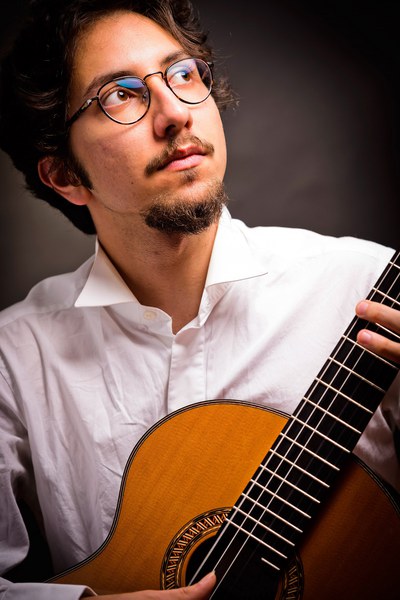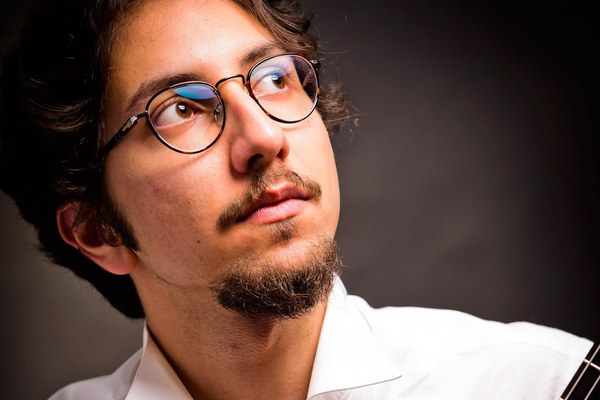We’re pleased to announce Celil Refik Kaya as the third recipient of the Early-Career Musician Residency, which provides time and resources to young musicians and composers who show promise in transmitting traditions of classical music to younger generations. The residency was previously held by Pulitzer Prize-winning composer and violinist Caroline Adelaide Shaw and opera composer Matthew Aucoin.

Kaya, trained as a classical guitarist from the age of six, has studied with the Grammy-winning guitarist Sharon Isbin and in the studio of Michael Newman, himself a disciple of Andrés Segovia. A prolific and decorated performer, Kaya has received numerous prizes at international competitions, including first prize in the 2012 JoAnn Falletta International Guitar Concerto Competition. As a soloist, Kaya tours internationally and in the United States, working with a number of professional orchestras, including the Buffalo Philharmonic, the Brevard Festival Orchestra, and the Istanbul State Symphony. Over the course of his career, he has presented the premieres of concertos by artists like Roberto Sierra and Suleyman Alnitemiz.
Kaya comes to Dumbarton Oaks from the University of Texas at Austin, where, as the recipient of a Harrington Fellowship, he is pursuing his PhD in the studio of guitarist Adam Holzman. When his residency begins this fall, he will continue work on a number of compositional and recording projects, cataloguing and publishing an ever-growing oeuvre of compositions while working on an upcoming CD. (His first CD, released by Naxos in 2016, explores the guitar music of the Argentinian guitarist and composer Jorge Morel, with whom Kaya maintains a close working relationship.)
This balancing act between performance and composition manifests in his concerts, which typically include one or two of his own pieces. Likewise, when Kaya sits down to compose, the resulting works bear a number of disparate influences. “I usually write in different styles,” he explains. “Sometimes I’m using quarter tones—sometimes I’m working in a more neo-romantic style. I’m also writing for different combinations of instruments, like kota and guitar, or rebab and guitar. I recently wrote a piece performed at the Sydney Opera House that was based on a Japanese folk song, so there was a story embedded in the piece that would attract the audience.” Making use of familiar elements to introduce audiences to unfamiliar styles is a common tactic of Kaya’s: “I try to mix different concepts according to the circumstances.”
For Kaya, a willingness to mix and experiment while staying grounded in the tradition of Western classical music is paramount to revitalizing interest in the genre. Ultimately, in his opinion, classical music “should be something people can relate to,” neither too modern and abstract nor trapped “in the style of an era remote from the present.” Kaya believes engagement should be a central goal of classical music, and that “the best way of continuing the Western classical music tradition and of influencing the audience is performing not just the works that only the composer will understand and appreciate, but works that the audience can grasp and appreciate as well.”

